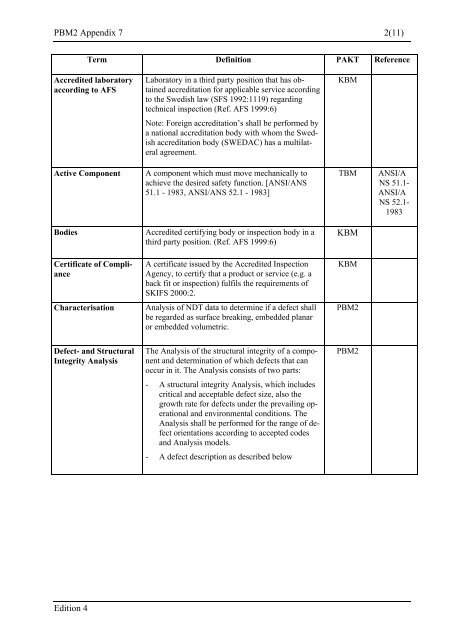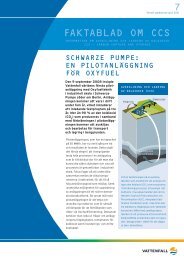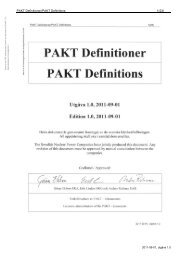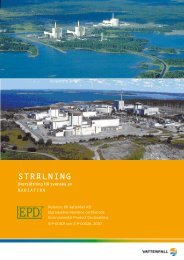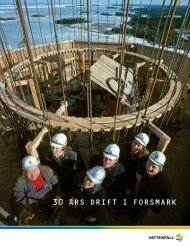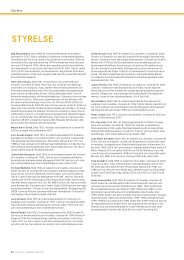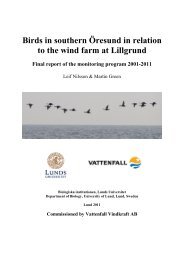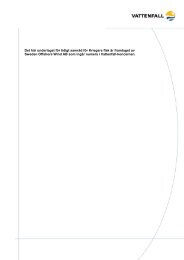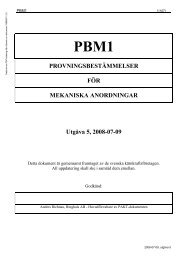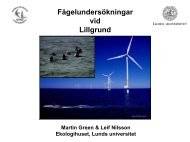Rules for qualification of NDT systems in Sweden (PDF ... - Vattenfall
Rules for qualification of NDT systems in Sweden (PDF ... - Vattenfall
Rules for qualification of NDT systems in Sweden (PDF ... - Vattenfall
You also want an ePaper? Increase the reach of your titles
YUMPU automatically turns print PDFs into web optimized ePapers that Google loves.
PBM2 Appendix 7 2(11)<br />
Edition 4<br />
Term Def<strong>in</strong>ition PAKT Reference<br />
Accredited laboratory<br />
accord<strong>in</strong>g to AFS<br />
Laboratory <strong>in</strong> a third party position that has obta<strong>in</strong>ed<br />
accreditation <strong>for</strong> applicable service accord<strong>in</strong>g<br />
to the Swedish law (SFS 1992:1119) regard<strong>in</strong>g<br />
technical <strong>in</strong>spection (Ref. AFS 1999:6)<br />
Note: Foreign accreditation’s shall be per<strong>for</strong>med by<br />
a national accreditation body with whom the Swedish<br />
accreditation body (SWEDAC) has a multilateral<br />
agreement.<br />
Active Component A component which must move mechanically to<br />
achieve the desired safety function. [ANSI/ANS<br />
51.1 - 1983, ANSI/ANS 52.1 - 1983]<br />
Bodies Accredited certify<strong>in</strong>g body or <strong>in</strong>spection body <strong>in</strong> a<br />
third party position. (Ref. AFS 1999:6)<br />
Certificate <strong>of</strong> Compliance<br />
A certificate issued by the Accredited Inspection<br />
Agency, to certify that a product or service (e.g. a<br />
back fit or <strong>in</strong>spection) fulfils the requirements <strong>of</strong><br />
SKIFS 2000:2.<br />
Characterisation Analysis <strong>of</strong> <strong>NDT</strong> data to determ<strong>in</strong>e if a defect shall<br />
be regarded as surface break<strong>in</strong>g, embedded planar<br />
or embedded volumetric.<br />
Defect- and Structural<br />
Integrity Analysis<br />
The Analysis <strong>of</strong> the structural <strong>in</strong>tegrity <strong>of</strong> a component<br />
and determ<strong>in</strong>ation <strong>of</strong> which defects that can<br />
occur <strong>in</strong> it. The Analysis consists <strong>of</strong> two parts:<br />
- A structural <strong>in</strong>tegrity Analysis, which <strong>in</strong>cludes<br />
critical and acceptable defect size, also the<br />
growth rate <strong>for</strong> defects under the prevail<strong>in</strong>g operational<br />
and environmental conditions. The<br />
Analysis shall be per<strong>for</strong>med <strong>for</strong> the range <strong>of</strong> defect<br />
orientations accord<strong>in</strong>g to accepted codes<br />
and Analysis models.<br />
- A defect description as described below<br />
KBM<br />
TBM ANSI/A<br />
NS 51.1-<br />
ANSI/A<br />
NS 52.1-<br />
1983<br />
KBM<br />
KBM<br />
PBM2<br />
PBM2


